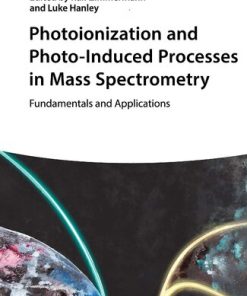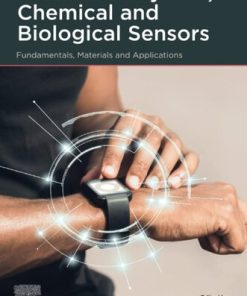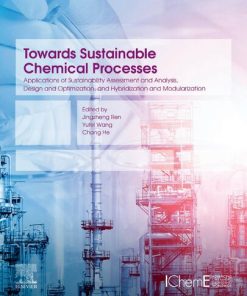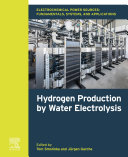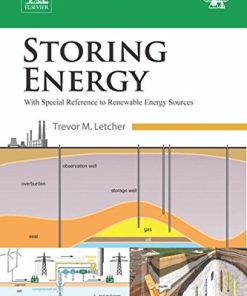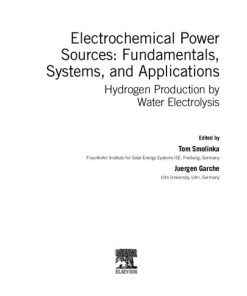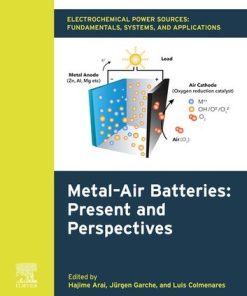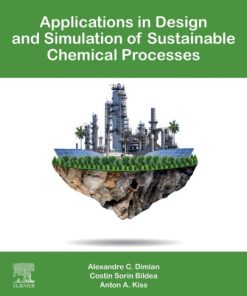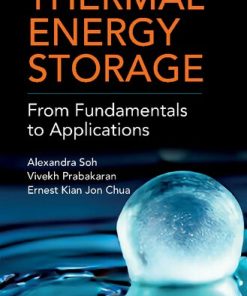Energy Sources Fundamentals of Chemical Conversion Processes and Applications 1st Edition by Balasubramanian Viswanathan 0444563601 9780444563606
$50.00 Original price was: $50.00.$25.00Current price is: $25.00.
Energy Sources. Fundamentals of Chemical Conversion Processes and Applications 1st Edition by Balasubramanian Viswanathan – Ebook PDF Instant Download/DeliveryISBN: 0444563601 9780444563606
Full download Energy Sources. Fundamentals of Chemical Conversion Processes and Applications 1st Edition after payment.
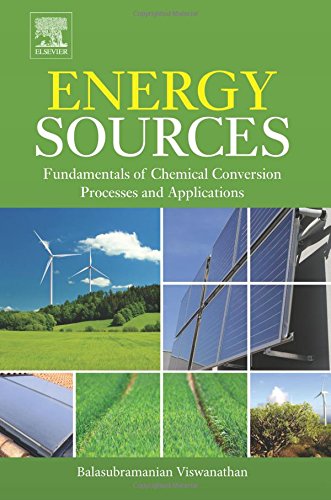
Product details:
ISBN-10 : 0444563601
ISBN-13 : 9780444563606
Author : Balasubramanian Viswanathan
Energy Sources: Fundamentals of Chemical Conversion Processes and Applications provides the latest information on energy and the environment, the two main concerns of any progressive society that hopes to be sustainable in the future. Continuous efforts have to be exercised in both these areas by any of the developing communities, as concern over energy conversion continues to evolve due to various ecological imbalances, including climate change.
This book provides the fundamentals behind all energy conversion processes, identifies future research needs, and discusses the potential application of each process in a clear-and-concise manner. It is a valuable source for both chemists and chemical engineers who are working to improve current and developing future energy sources, and is a single reference that deals with almost all energy sources for these purposes, reviewing the fundamentals, comparing the various processes, and suggesting future research directions.
Energy Sources. Fundamentals of Chemical Conversion Processes and Applications 1st Table of contents:
Chapter 1. Introduction
Why Another Book on Energy?
Nuclear Energy
Solar Energy
Hydrogen Energy
Fuel Cells
Photosynthesis as a Possible Energy Source
Proposed Scope of This Presentation
Chapter 2. Petroleum
Introduction
Origin of Petroleum
Composition of Petroleum
Production or Extraction of Petroleum
Petroleum Refining
Products of Oil Refinery
Petrochemicals
Chapter 3. Natural Gas
Introduction
Sources of Natural Gas
Physical Properties of Natural Gas
Classification of Natural Gas
Natural Gas Products
Transportation
Chemicals From Natural Gas: Natural Gas as a Feedstock for Production of Value-Added Products/Chemicals
Chapter 4. Coal
Introduction
Coal: An Age-Old Energy Source
The Genesis of Coal
Metamorphosis of Peat to Coal
Molecular Structure of Coal
Coal Petrography: The Study of Macerals
Constitution of Coal
Carbonization
Coal for Generation of Electricity
Coal Liquefaction
Coal Blending
Calorific Value and Its Determination
Coal Burning: Environmental Hazards and Measures
Conclusion
Chapter 5. Nuclear Fission
Introduction
The Nucleus and Its Constituents
Radiation and Nuclear Reactions
Nuclear Fission
Fast Breeder Reactor
Fission to Electricity
A Word of Caution
Chapter 6. Nuclear Fusion
Introduction
Methods for Carrying Out Fusion
Comparison of Energies Released From Various Processes
Conditions for a Fusion Reaction
Temperature
Density
Energy Confinement
Magnetic Plasma Confinement
Principle Methods of Heating Plasma: Ohmic Heating and Current Drive
Neutral Beam Heating
Radio-Frequency Heating
Self-Heating of Plasma
Measuring the Plasma
Cold Fusion
Chapter 7. Solar Energy: Fundamentals
Chapter 8. Photovoltaic Systems
Dye-Sensitized Solar Cells
Perovskite-Based Solar Cells
Chapter 9. Hydrogen as an Energy Carrier
Direct Electrolysis
Effect of Temperature and pH on the Decomposition Potential
Steam-Reforming (Steam-Methane Reformation)
Biomass Gasification
Hydrogen From Coal
Biochemical Hydrogen Production
Thermochemical Decomposition of Water
Photochemical Hydrogen Production
Photo-Electrochemical Hydrogen Production
Photocatalytic Hydrogen Production
Developments in Photo-Electrochemical and Photocatalytic Decomposition of Water
Chapter 10. Hydrogen Storage
Gaseous Hydrogen Storage
Hydrogen Storage
Solid Hydrogen Storage
Epilogue
Chapter 11. Photo-Catalytic Routes for Fuel Production
Mechanism of Semiconductor Photo-Catalysis
Applications of Photo-Catalysis for Pollutant Removal
Processes for CO2 Conversion
CO2 Photo-Reduction With Water: Process Features
Catalysts for Photo-Reduction of CO2 With Water
Influence of Experimental Parameters
Classification of Catalyst Systems
Kinetics and Mechanism of CO2 Photo-Reduction With Water
Deactivation of Photo-Catalysts
Chapter 12. Batteries
Chapter 12.1: Primary Batteries
Chapter 12.2: Secondary Batteries
Chapter 12.3: Other Batteries
Chapter 13. Supercapacitors
Introduction
Faradaic Supercapacitors
Differences Between a Supercapacitor and a Battery
Electrode Materials for Supercapacitors
Carbon Nanotube–Based Supercapacitors
Carbon Nanotube Electrodes
Carbon Nanotube–Composite Electrodes
Metal Oxide–Hydroxides
Conducting Polymers
Chapter 14. Fuel Cells
Introduction
What Is a Fuel Cell?
Choice of Fuel and Oxidant
How Does a Fuel Cell Work?
Thermodynamics
Kinetics
Fuel Cell Efficiency
What Are the Various Types of Fuel Cells?
Alkaline Fuel Cells
Phosphoric Acid Fuel Cells
Proton Exchange Membrane Fuel Cells
Direct Methanol Fuel Cells
Molten Carbonate Fuel Cells
Solid Oxide Fuel Cells
Electrodes and Electro-Catalysis
Electro-Catalysis
Chapter 15. Biochemical Routes for Energy Conversion
Biomass Components
Photosynthesis
Biomass Conversion Process
Biological Hydrogen Production
Fermentative Hydrogen Production
Photosynthesis Process
Ethanol as Biofuel From Biomass
Ethanol From Molasses
Biodiesel
Biogas
Photosynthesis
Concept of Biorefinery
Chapter 16. Energy Conversion Routes: An Evaluation
Introduction
People also search for Energy Sources. Fundamentals of Chemical Conversion Processes and Applications 1st:
fundamentals of renewable energy sources
fundamentals of renewable energy sources pdf
fundamentals of renewable energy sources tiwari pdf
fundamentals of new energy sources
what are the fundamental sources of energy
Tags:
Energy Sources,Fundamentals,Chemical Conversion,Processes,Applications,Balasubramanian Viswanathan
You may also like…
Engineering - Bioengineering
Engineering - Chemical Engineering
Technique - Energy: Renewable Energy
Electrochemical Power Sources: Fundamentals, Systems, and Applications 1st Edition
Engineering
Storing Energy. With Special Reference to Renewable Energy Sources 1st Edition Trevor M. Letcher
Science (General)




